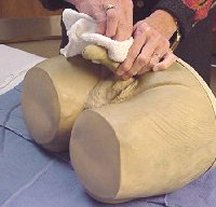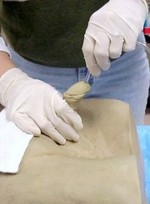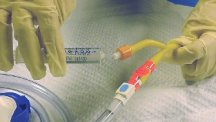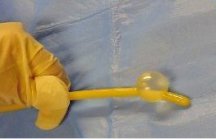Indwelling foley catheters for males
An indwelling catheter is also called a foley catheter. A foley is usually left in the bladder and drains the bladder continuously.
An indwelling catheter is also called a foley catheter. A foley is usually left in the bladder and drains the bladder continuously.




Catheters can stay in for about a month as long as it is not leaking or having crusty areas around it near the urethral opening. You should wash the urinary opening at least twice a day while the catheter is in place. Change the catheter by the schedule given to you by your doctor.
Yes. Save the syringe so you can deflate the balloon when the catheter needs to be removed.
Stop and get another catheter or kit. It is important that germs do not enter the bladder during this procedure.
Stop and wait for the spasm to pass; then continue with the insertion.
Do not force the catheter in. Call the doctor for further advice.
